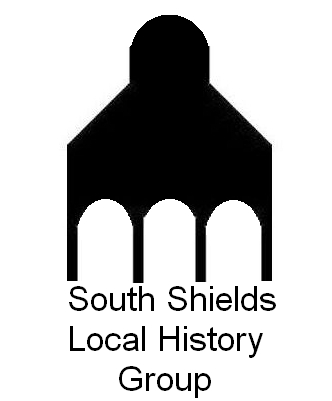Pilot Street used to run from Coble Landing at the end of Shadwell Street through to the Little Haven/Groyne area. When River Drive was built Pilot Street was incorporated into it and Pilot Street no longer exists as a name. The former Vidor Battery factory, now called SAFT, is the starting point for the old Pilot Street.
For most of the 19th century Pilot Street was mainly a shipyard area.

Robert Wallis
Possibly the most important shipbuilder ever in South Shields was Robert Wallis (bold claim)! Certainly those giants of South Shields history: William Brockie, George B Hodgson and Amy Flagg seem to think so, each telling tales of Roberts Wallis and his battles with Newcastle!

When he launched his first ship (what was her name, I wonder?), the Corporation sent him a message stating that if he launched her in their waters they would seize her as their property. Mr Wallis met this threat with his usual spirit. On the day of launching, when all was ready, and as soon as the ship glided into the Tyne, he had men in readiness who hauled her again on the shore, high and dry, on Dean and Chapter land, and, of course, beyond the jurisdiction of the Corporation. (Brockie, W, The Folks of Shields, p. 81)

About 1718 or 1720, in defiance of the claims of Newcastle, which had decreed that none but freemen of that town should build ships on the river, and that no vessel should be constructed at Shields… Undismayed by this he laid down his first keel. The Corporation… sent down an alderman with the water bailiff and a posse of officers to forcibly hinder the work they attempted to land in the yard … and no sooner had a gang-plank been laid from the boat, and the alderman set foot thereon to land, than the shore end of the plank was shoved of and the Newcastle dignitary treated to an involuntary bath…. The Corporation brought two actions at law against Mr. Wallis, both of which he successfully defended, and thus destroyed forever the veto so long imposed by Newcastle on shipbuilding at South Shields. (Hodgson, Borough of South Shields, p. 320)
Expensive lawsuits were brought against Wallis but he defended them successfully, and so broke the ban on local shipbuilding; he continued to prosper, with the help of his four sons all of whom were apprenticed to him, three being admitted Freemen of Newcastle by patrimony. (Flagg, A, Notes on the History of Shipbuilding in South Shields 1746-1946, p. 3)
Bold claim, no Robert Wallis could possibly have meant no ship building in South Shields!!
Amy Flagg identifies Wallis’s shipyard as being “adjoining the Coble Landing.”
There can be no doubt as to the location of the Wallis shipyard — as distinct from the dockyard at the western end of the town — for its history, under various owners, is practically serial from 1729 to 1919, almost two hundred years. The tradition is that Robert Wallis came to Shields in 1720; but it was in 1729 … the ground adjoining the Coble Landing.
Rennoldson Shipyards
In 1869 the Wallis shipyard was taken over by firm J P Rennoldson.

His son Charles Rennoldson took over the shipyard next door in 1913 and according to Amy Flagg seems to have been a considerate employer:
“C.R.’s” office building, despite a disastrous fire in 1938, still exists and is part of a factory. The curious tower with its grilles was built by Mr Rennoldson for a very special purpose. He had an aversion to a hooter or siren being used to summon his men to work or release them; so he had this tower built intending to have a carillon of bells installed; but the First War, post-war difficulties and his death prevented this plan from being fulfilled. (Flagg, A, Notes on the History of Shipbuilding in South Shields, p. 26).

This building later became Tyne Chemical Works in 1939 until 1976 and is now Prestige Seating Technology.
The Charles Rennoldson and J P Rennoldson shipyards built over 250 ships but both went out of business by 1929. The shipyards were demolished in 1937 and most of Pilot Street was laid waste as part of the Riverside redevelopment.


Factories
In 1945 building work started on the J P Rennoldson site and by 1947 James Shaffer had moved in.

Shaffer’s then became Burndept in 1951 this was generally known as Vidor Batteries until it was taken over by Crompton Parkinson’s in 1968 it is now SAFT battery factory.
Anglo American Oil/Velva Liquids
The Anglo American Oil Company, owned by John D. Rockefeller opened an oil terminal at the end of Pilot Street in 1887, the petroleum came from Russian oil fields.



In the 1950s Anglo American Oil became Esso, the terminal was closed by Esso in 1963 as it was deemed to be too small. Velva Liquids took over the site in 1971.

On the 24th June 1979 workmen discovered the remains of a body in one of the tanks when they were cleaning it. A man was convicted of the crime but was subsequently released after a BBC “Rough Justice” documentary in 1985.


Velva Liquids closed in 1986 and became Littlehaven apartments in 1993, later called Harbour View.

Sources:
Borough of South Shields, George B Hodgson, 1903
British Newspaper Archives
Notes on the History of Shipbuilding in South Shields 1746-1946, Amy Flagg
The Family Names of The Folks of Shields, Brockie W, 1857
Photos
Pete Hempson
South Tyneside Libraries
Terry Ford
Tyne and Wear Museums
